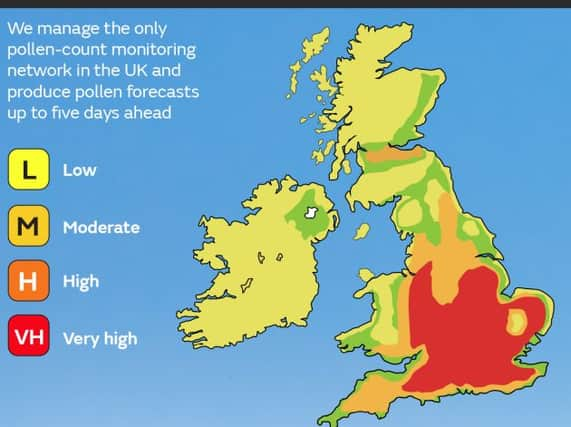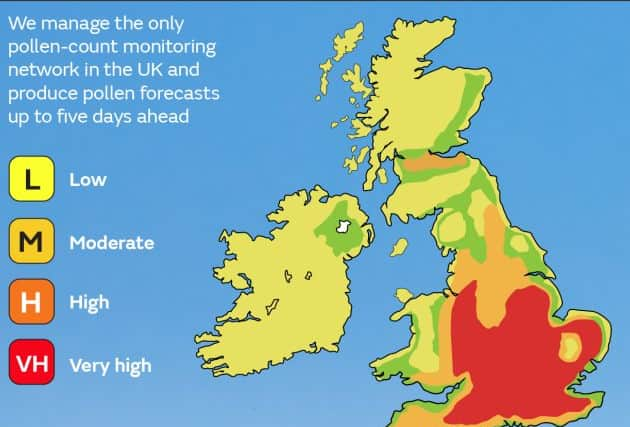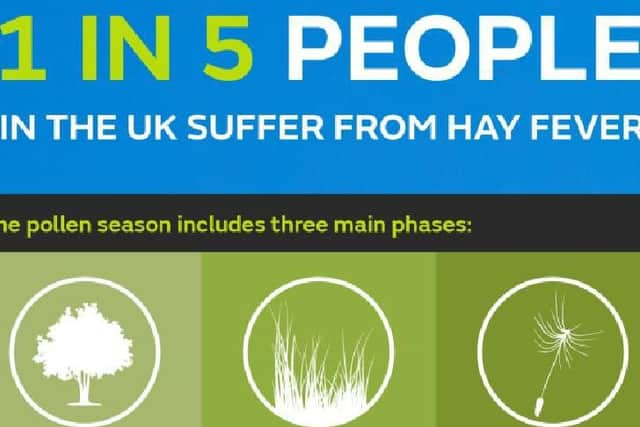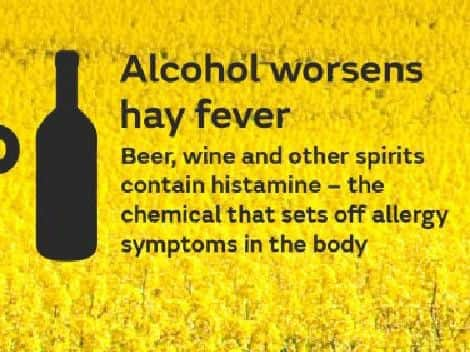High pollen count issued for first time this year in Leeds - but what does it mean?


READ: Tuesday's weather forecast for LeedsThe Met Office have issued the high pollen count for today (Tuesday, April 17), but what exactly does it mean?
How do they measure the pollen count?
The Met Office manage the only pollen count monitoring network in the UK using information from their network, weather data and expertise from other organisations to produce forecasts that help support allergy and hay fever sufferers.


The pollen season separates into three main sections:
Tree pollen - late March to mid-May.
Grass pollen - mid-May to July.
Weed pollen - end of June to September


Advertisement
Hide AdAdvertisement
Hide AdThe Met Office's forecast is based on this detailed breakdown of the different types of pollen and their peak times within a season.
READ: New drivers could be BANNED from driving with car full of friends in 'boy racer' crackdownWhat is hay fever and what are the symptoms?
Hay fever (seasonal allergic rhinitis) an allergy caused by pollen grains released during the pollen season which normally runs from March to November in the UK.
Common hay fever symptoms include sneezing, runny or blocked nose, itchy eyes, mouth and throat. Less common hay fever symptoms are headaches and hives.


How do I relieve symptoms?
Advertisement
Hide AdAdvertisement
Hide Ad- Keep windows closed when at home and overnight. Most pollen is released in the early morning and falls to ground level in the evenings when the air cools.
- When outdoors, wear sunglasses to keep pollen out of your eyes. Hay fever sufferers can experience itchy eyes when coming into contact with pollen spores. It is recommended that for any outdoor tasks, such as gardening, hay fever sufferers should wear a mask.
- Avoid drying your clothes outside when pollen counts are high. If you do, shake items before bringing them inside.


- Keep car windows closed when driving and fit a pollen filter to reduce the impact of pollen spores.
Advertisement
Hide AdAdvertisement
Hide Ad- When indoors, there are a number of useful tips to reduce the impact of hay fever symptoms such as: vacuuming regularly, avoid bringing fresh flowers indoors, and be aware that pets can bring pollen in on their fur.
- Don't allow smoking in the house as this will irritate the lining of your nose, eyes, throat and airways, making your hay fever symptoms worse.
- After being outside, shower and wash your hair to remove pollen.
Advertisement
Hide AdAdvertisement
Hide AdThe Met Office website advises 2005 that a diet rich in Omega-3 is associated with a decreased risk of hay fever. Omega-3 is most commonly found in oily fish such as mackerel and sardines and could prove beneficial if eaten regularly. It could be easier to include in your diet as a supplement, but it is best in its purest form.


Garlic can also be a good way to battle the symptoms of hay fever. As dust and pollen cause inflammation, your body produces histamine, which is why sufferers experience a blocked nose and congestion. Garlic is actually a good source of antihistamine - which combats the histamine chemical produced by your body and reduces the effect of hay fever symptoms.
One of the most famous home remedies for hay fever could come as some sweet relief. It's been said that taking a teaspoon of honey each day can help your body build a natural defence against the pollen which was used in its creation.
There does though appear to be little more than anecdotal evidence with a 2002 study from the University of Connecticut suggested that taking honey did not provide relief from the symptoms of hay fever.